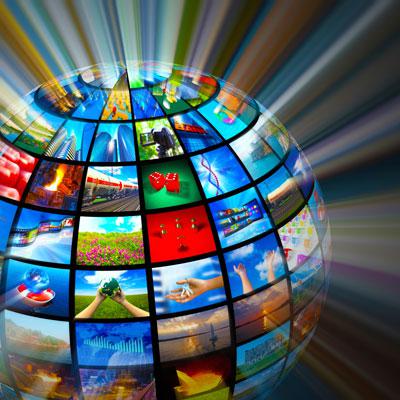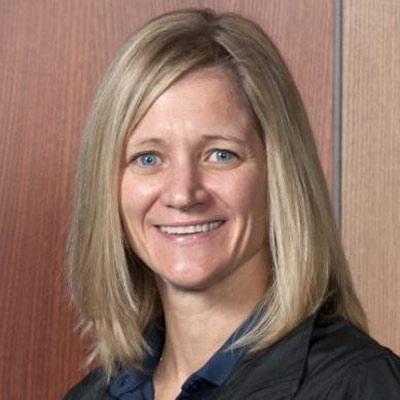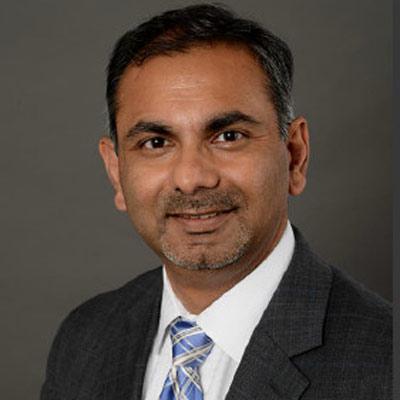7 Top Tech Execs On The Next Big Opportunities In IoT

'Everything Can Have IoT Eventually'
Last week, Ericsson released its new forecast for Internet of Things connectivity, predicting there will be 3.5 billion IoT cellular connections for 2023, nearly double its forecast from last fall.
To executives at vendors and solution providers, reports like this help underline their belief that the impact IoT will have on the world will be far and wide. At last month's IoT World 2018 conference in Santa, Clara, Calif., CRN caught up with executives and product leaders at Google, Cisco, Juniper, AT&T, Avnet, Cambium Networks and Comtech Telecommunications Corp. to ask them where they see the next biggest opportunities in IoT.
In their answers, some focused on the big picture: "As the price of the device falls, as the compute power goes up, as these incredible networks come out with extremely low costs and low latency and low power, everything can have IoT eventually," Lou Lutostanski, Avnet's vice president of IoT, said.
While others focused on specific applications: " The general category that we see having huge potential is asset tracking," Brian Salisbury, vice president of product management at Comtech, said.
What follows are the answers from seven tech executives on where they see IoT's biggest opportunities.
Lou Lutostanski, VP of IoT, Avnet
I think they're everywhere. I had some thoughts the other day that for the first time ever, technology is not the limit. The imagination is the limit. And I think if you froze technology for a day, we'd still have five years of what you could do with your imagination. I'm talking about imagination used to be, "what could you make the product do?" And now it's, "what business model can you marry a product with to transform an industry, to disrupt a normal business?" I think it's everywhere. I was thinking the other day, someday every rock is going to have a device in it. People look at me and they said, "you know what? People are putting IoT devices in bricks so they can judge the structure of the wall after things are done." I don't know if that's true or not, but you can see where that makes sense. As the price of the device falls, as the compute power goes up, as these incredible networks come out with extremely low costs and low latency and low power, everything can have IoT eventually. I think 10 years from now you won't find anything that's not smart, that's not connected, that's not involved in a system for a business model.

Bruce Collins, product management director, Cambium Networks
The biggest opportunity we see is really how you simplify this for the operator or the end user. A lot of what we talk about — machine learning, artificial intelligence, edge intelligence, security — if you go Google search any of those and put the "IoT" after it, you'll see 400-500 companies pop up. And if you're the IT manager of a small city or a village — 10,000 people, 20,000 people, maybe 100,000 people — you're going to be overwhelmed by the options. And what we try to do and [where] we see the opportunity is, how do we filter that down to a — here's a particular solution to a particular problem. So, as LoRa [long range wireless] emerges for low-power, wide area, how can you make that simple for operators to deploy just like we've made broadband communications simple. We've deployed millions of radios around the world; I think we're up to 7 million radios at this point, so the first radio is the hard one, then the other seven million, those are hard too, but we've done seven million, [so] you've got to make it very simple and repeatable steps. That doesn't mean following every new press release or announcement of every new company that comes out and talks about IoT. We have to really sort of filter that and then get that into our channel partners' hands so they can spread the word.

Brian Salisbury, VP of product management, Comtech
The general category that we see having huge potential is asset tracking and asset tracking breaks down into so many individual types of assets and different use cases and different meanings even for the word "tracking." For some people, it's very sort of logistics focused and tracking parcels that they move around. In other cases, it's understanding the movement of things and people so you can perform optimization exercises and you can generate demographics and you can all kinds of data science-type work with it. I think for me, just in general, the most exciting part about IoT is going to be, once there's enough volume of data from these smart things that have been in the real world for a few years, the insights that are going to be possible to be generated from that. To me, that's where there's a huge amount of potential, because now if you can take those insights and turn them into actions, then that's something that enhances life quality and generates revenue and improves security, [and there are] so many different ways in which it can manifest.

Jenn Bennett, technical director, office of the CTO, Google Cloud
How imaginative can you be? I actually think it starts with, what are some of those really hard problems you haven't been able to solve? This is where we've always started with IoT and thinking differently about the problem. Focus on what are those really challenging problems that you've struggled to solve? There's a great chance that if you can instrument and gather more data and then use something like machine learning to process some of that data more efficiently, you're going to unleash some magic. I think verticals start to break down because a company that's a manufacturer now has to become great at logistics and so IoT starts to break down the barrier of verticals.

Mike Marcellin, CMO, Juniper Networks
Where I think the opportunity is: I think we're going to get from that kind of deep single deployment to broad-scale deployments. And that's both scaling a given application in greater number and density, if you will, and that's multiple applications. I think we're just scratching the surface about, "OK, if I truly have 'everything connected' as a city or whatever, what can that empower for the users, be they employees or citizens or whatever." I think there are probably some things we haven't thought through back to the quality-of-life thing. Now there is still that calibration of what's OK, so I think that's going to be the conversation we need to have. I think at least the technology will enable us to do some very interesting things to get more efficient, to improve quality of life, to improve safety and security in ways that I think people will be very interested in.

Mobeen Khan, IoT exec, AT&T
On the connectivity side, I think we continue to make sure that the network needs of our customers are met. What I mean by that is, not every IoT solution that we deploy requires cellular connectivity. We would like it to, but that's not the case, so you have to provide a set of platforms and capabilities that allow for all these different kinds of connectivities to be well integrated and managed through the platforms that we offer, and that's an area we're investing in where there's satellite, Wi-Fi, cellular. At the platform layer, we continue to make sure that we can cover as many devices and device ecosystems as possible, so when you think of the next new thing you want to connect, you have the right set of modules and devices available. So we work very closely with the device ecosystem, make sure they are certified on our network, but also are platform-ready so that the data can continue to be consumed really quickly. At the application layer, that's where we have somewhat of a two-prong strategy, where there are certain areas we will go after, having our own application, but then we need to enable third-party applications. And so we have, for example, a marketplace now where third-party devices, data plans and some applications are available and we're looking to expand that.
Maciej Kranz, VP of strategic innovation group, Cisco
I think what we've done over the last 10 years or so, we focused primarily on improving existing processes and then making them more efficient. Now I think because of the combination of these four technologies — IoT, AI, blockchain and fog [computing] — I think we will reach the next phase where we see new value propositions, like mass customization, mass personalization. We see new business models. We're starting to look at opportunities like micro transactions, which I think you need blockchain, fog, IoT and AI for that. Convergence of existing industries, like technology and transportation. I actually see manufacturing and retail to be converging as well. Traditionally, we had B2B as a primary sort of market for IoT. We're starting to see B2C start to emerge as a much more interesting market. The reason I'm excited about it is because we're moving from efficiency to new value creation. It will be very interesting.